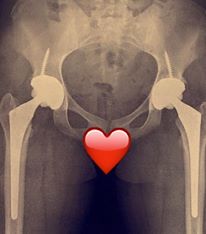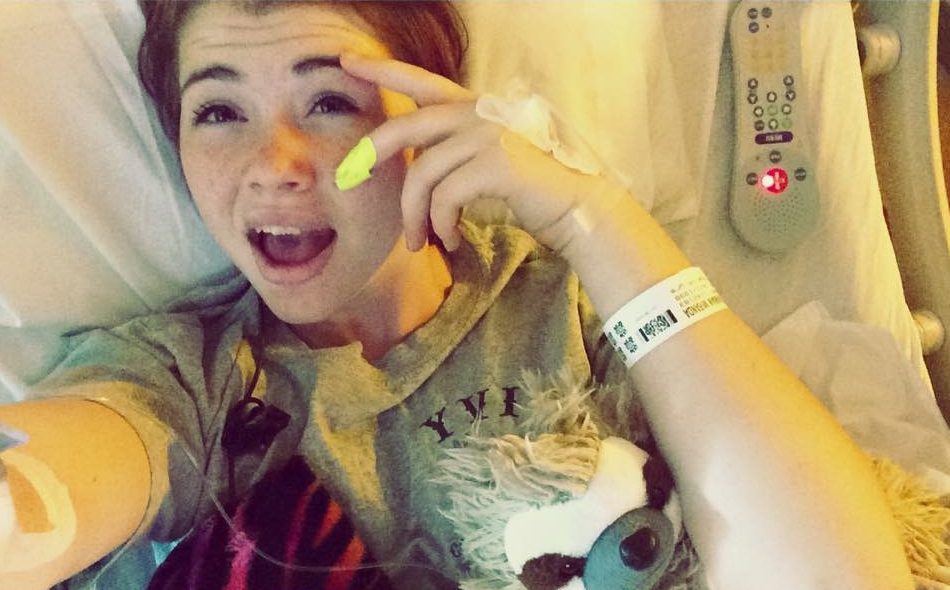Inspiring the community through the creative arts is at the heart of the Fine Arts Center’s mission, and this could not be achieved without the people involved with the FAC, whether through the museum, theatre or Bemis School of Arts. Members of the community make the FAC what it is, and the young people of Colorado Springs who inject their creativity, passion, and artistic flair into the FAC are what make it such a unique place.
The Youth Documentary Academy, housed at the Bemis School of Arts and the FAC, provides media and documentary film training to high school students in under-served communities of Colorado Springs. Students between the ages of 14 and 18 spend seven weeks learning all about documentary filmmaking, producing their own documentaries on whatever issues are important to them. This week, I met Shannan Craine, an amazing young woman who, despite growing up with juvenile arthritis, has refused to let her condition define her way of life. Shannan loves skateboarding and photography, and instead of being held back by her arthritis, she told me that she was grateful for the friends it has allowed her to make, and how it fed into her documentary for the YDA.
What made you decide to apply for the YDA?
It was my mum that first told me about it, because my brother’s best friend had been a part of it the first year that it ran. Then I just thought I’d see where it went. I’ve always loved photography so then in the interview I brought in a portfolio of my photographs. Then it was the interview itself that really made me want to take part in the program – the more they told me about the program, the more I wanted to get involved. Because I came to love film through photography, my film is really abstract compared to the others, because I look at film through a different lens. Having done the program, I am definitely going to keep up with film as well as photography – the experience has given me a new love for film.
What were some of the highlights of the experience on your part?
I’ll be kind of cheesy – I really liked working with all my peers and mentors. People are my thing – I just like talking to people. Everyone did such touching topics, so getting more in depth with all these people was an opening experience, an eye-opener that they are all different people in your eyes when you get to know them.
Oh and then using all of that really expensive camera equipment was amazing too. I don’t really use fancy cameras – for my photography I use a pretty low grade DSLR because I don’t have the budget. So having that opportunity was great.
Tell me about your documentary.

So I’ve had juvenile arthritis since I was about 7 – almost 12 years now. When people hear arthritis when you’re 7, 8, 9, it’s a really big shocker and to be honest they don’t even believe you. So it was a real rollercoster what with all the people who were in disbelief about it, and all that surgery.
I started to always think about it automatically throughout middle school and high school whenever I had to write about stuff. It became my go-to point of discussion, to the extent that I could get a piece of writing about it done in about 2 minutes.
So when I first got here I didn’t want to use it because it’s boring for me even if it touches everyone else. Then I started to think about how much it actually has changed my life, and I thought that I should acknowledge that through the documentary. But I didn’t want it to be a linear retelling of the same story. So it’s pretty abstract. I narrate the whole thing, mostly talking about how I feel with the disease and how it feels physically and mentally. But people need visuals – when they hear that I’ve had two hip replacements, they say ‘oh that must hurt.’ But if you haven’t experienced you can’t fathom that kind of pain. So I spent a lot of time trying to figure out what kind of visuals I could use to convey this stuff more accurately. When I’m narrating I say stuff like I felt like an antique, and then I break glass because that’s how I felt: fragile, like I could break at any moment. There’s one scene when I’m talking about my hip replacements and how the machine didn’t work and I could actually feel the pain. So then I showed a clip of a raw piece of chicken and then I mangled it up. That’s how I felt. It’s hard for people to wrap their minds around those kinds of feelings – the visual has to connect to the story.
But, on the whole, it’s not supposed to be really dark. It is because you have to get a sense of the pain before the pleasure. But it also relates the fact that I’m at peace with my illness – sometimes I’m even bored of talking about it! It’s a part of me that I wouldn’t change; I’ve met so many people through it – some of my best friends even. So at the end I explain how it’s a big part of my life that I wouldn’t change. And it’s changed me for the better too because I don’t judge people. For me, I look at people a lot differently to most, and I’m a fun and outgoing person, and that’s all from my disease! So it’s the story from then to now.
You say that you’re used to not judging people, but I guess the premier must have been a weird experience, being under the scrutiny of others, and having them judge both your documentary skills, and, since the documentary is all about you, judging yourself?
Well the opening scene is just my face, and it’s blown up really big because I wanted it to be so dramatic. So I’m sitting there looking at myself, and everyone is looking at me, and I felt kind of weird about that. That picture is so old and awful! And then I don’t really share my story with everyone because my arthritis does not define me. All through in my head I was watching but also thinking what are they all thinking – to be honest, I just couldn’t tell. I know what I’m trying to portray but the question is whether they’re understanding that message. And then with people in the documentary like my mum and my best friend, it’s a cool experience to have them there watching it, but then you still have the same fears about them judging the film.
Do you think you would have had an easier time making a less personal documentary?
Yes it would have been easier. But I’m still glad that it was personal, because it shows who I am. I was going to do it on skateboarding, and on skaters’ portrayal in society, because I feel that it’s so misleading but they’re really just a community. So that was sort of personal because I skateboard, but also distant because it was about a whole community.
In the end I was persuaded to talk about my arthritis because other people were so interested in it. I’ve lived with it my whole life, so it’s not an interesting story to me, which is why I had to make it a bit more interesting to myself by making it more experimental and different.
How has the experience changed your outlook – on your photography, documentary as a medium, or your arthritis?
It’s more like it’s changed my outlook on life. Looking at everyone’s stories, and going through the process of making it with everyone by my side, and the fact that we were all connected despite our incredibly different stories. That was the part I loved the most – knowing the same people better day by day was so special to me. And the documentary form itself is so meaningful because it’s true and it has meaning to it. It’s not construing whatever the director wants like a fictional movie. So it’s given me a new respect for documentary movies that way. It’s all real – something fictional is all imaginary – a lot of my documentary is staged and supposed to show a certain message, but with a documentary, although you show it how you want, it’s all actually real.
So did you have a message that you wanted people to take away from the film?
It was always hard for people to connect to my story – they’re adults or children and I’m a child with a disease that old people have. So I was trying to appeal to everyone from all ages and genders and spectrums, and it’s hard to that when only a few kids have arthritis and adults often can’t comprehend that someone of my age can have hip replacements. It was those people who didn’t believe me who made me an advocate for myself.
With my personal film, I want people to take away that life isn’t all that bad. It could be worse. Even with me it could be worse! Your life can always be worse, and if you are happy in the moment, even if you are in physical pain, that pain is temporary – even mental pain is temporary. I wanted people to know that even with this disease, I’m still happy and you can be too. At the end of my film, I really wanted to portray that I love my arthritis. It’s given me more goods than bads. It’s made me have that outlook – and if I didn’t have it I wouldn’t be sitting here talking to you. So I want people to take away that you should enjoy life while you can, because it’s short.
*
Wednesday, October 26, 2016, 6:30pm at the Fine Arts Center SaGaJi Theater for a premiere screening of the 2016 Youth Documentary Academy (YDA) films
https://www.facebook.com/events/1113898632034498/
http://www.youthdocumentary.org/2016-yda-premiere-announced/


